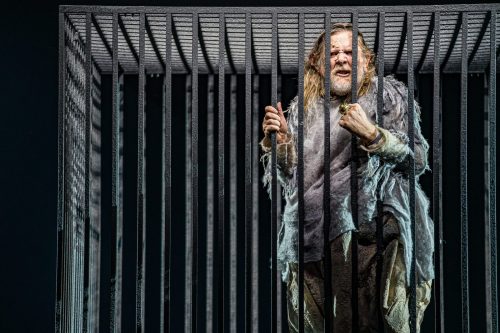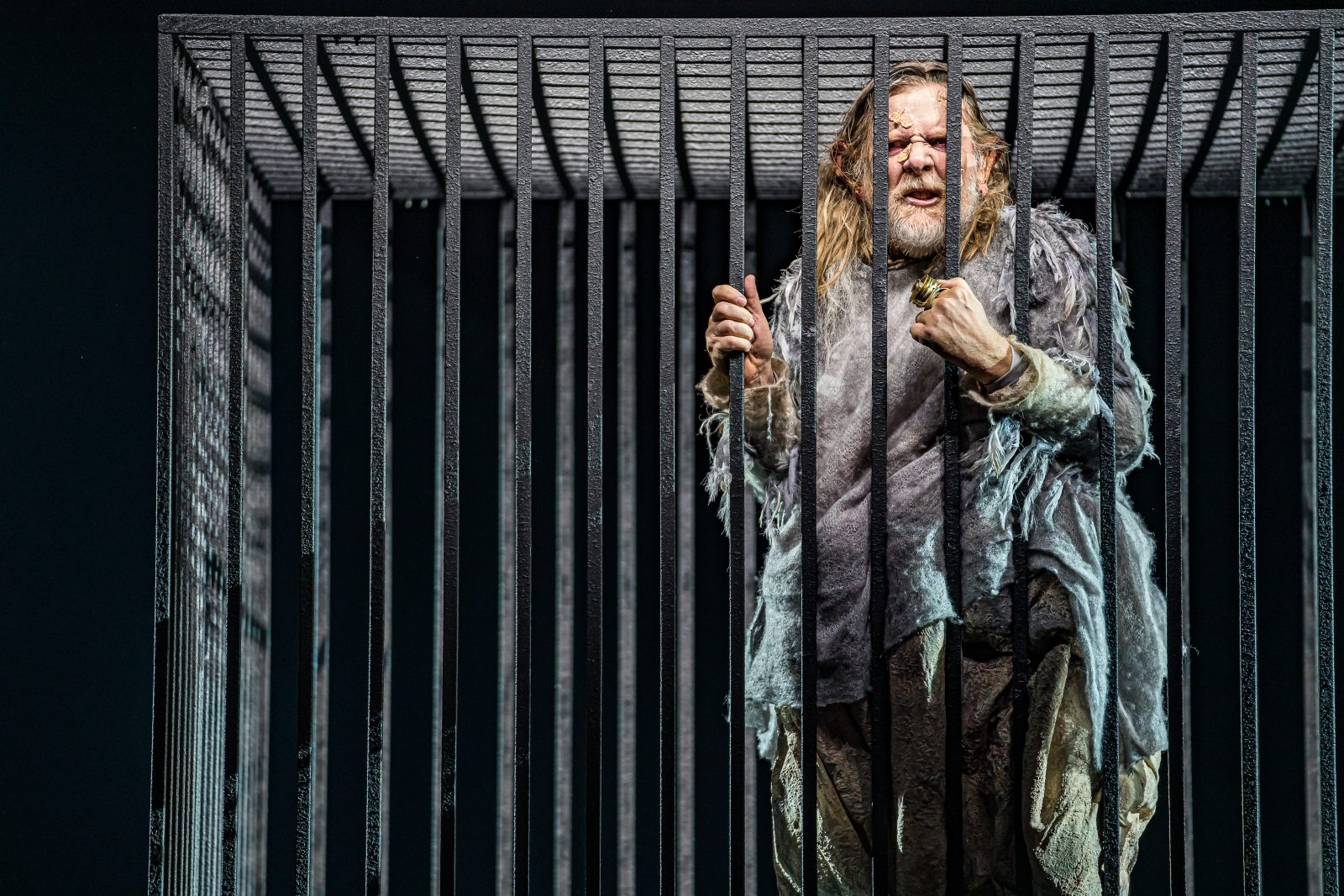 Finland Wagner, Das Rheingold: Soloists, Finnish National Opera Orchestra / Esa-Pekka Salonen (conductor), Finnish National Opera, Helsinki, 3.9.2019. (GF)
Finland Wagner, Das Rheingold: Soloists, Finnish National Opera Orchestra / Esa-Pekka Salonen (conductor), Finnish National Opera, Helsinki, 3.9.2019. (GF)

Production:
Director – Anna Kelo
Sets, lighting and video planning – Mikki Kunttu
Costumes – Erika Turunen
Cast:
Wotan – Tommi Hakala
Fricka – Lilli Paasikivi
Loge – Tuomas Katajala
Freia – Reetta Haavisto
Donner – Tuomas Pursio
Froh – Markus Nykänen
Alberich – Jukka Rasilainen
Mime – Dan Karlström
Fafner – Jyrki Korhonen
Fasolt – Koit Soasepp
Erda – Sari Nordqvist
Woglinde – Marjukka Tepponen
Wellgunde – Mari Palo
Flosshilde – Jeni Packalen
‘In the beginning darkness was over the face of the deep’, but while the orchestral prelude slowly grew in a hypnotic crescendo in E flat major over 136 bars, rays of light began to appear from underneath in a fascinating, spectacular display. Dim images of gold bars heralded the first scene, the bottom of the River Rhine with the three Rhinemaidens merrily playing. To the left in the barren landscape was an enormous egg, out of which a human being suddenly forced his way. Was this the birth of Alberich? His fervent attempts to entangle the maidens and his cunning theft of the gold was graphically choreographed and entertaining. With the ensuing shift of scenes to the world of the Gods, it was obvious that they hardly belonged in the chilly Norse mythology but rather in a mild Mediterranean landscape. The glimpse of Valhalla under construction was reminiscent of a magnificent Greek temple and the Gods were wearing elegant togas. But they had their usual attributes: Wotan’s spear was as Nordic as ever, Donner’s gigantic hammer seemed borrowed from the latest Finnish design exhibition and Froh wandered about with his lyre held high and played with sweeping gestures. Rather a parody – and why not? Wagner himself described Das Rheingold as a black comedy, as director Anna Kelo mentions in an interview in the programme notes. The giants, Fafner and Fasolt, are always difficult to interpret, since most deep basses are seldom of more than average size. Here they were represented more indirectly as grotesquely enlarged faces on screens, while the singers, dressed in black, stood by the side of the stage, and the distorted close-ups on the screens were certainly frightening. Even more frightening was the video image of the serpent that Alberich turns himself into in the Nibelheim scene: an enormous red writhing monster with a horrifying face. The video images were truly impressive and contributed greatly to making this production a feast for both eyes and ears.
I am not sure how much Wagner Esa-Pekka Salonen has conducted and this is in any case his first Ring cycle. Sensible tempos, slightly on the brisk side, and rhythmical precision made the performance come alive and the orchestra played with admirable stamina and power. And the standard of the singing was, with one or two exceptions, very high. Tommi Hakala, who may have sounded rather worn at times over the last few years, impressed greatly as Wotan, singing with steady tone and verbal acuity. Lilli Paasikivi’s Fricka was also excellent. Possibly the best singing of all was delivered by Tuomas Katajala as the red-haired Loge. Seemingly effortless beauty of tone and expressive acting characterised his performance. His tenor colleague Markus Nykänen as the gentle Froh also sported a beautiful voice, especially in the short scene where he creates a rainbow bridge to Valhalla. Tuomas Pursio’s Donner was perhaps having an off day, with a heavy wobble that disfigured his singing. Koit Koasepp and Jyrki Korhonen are reliable and their giants made lasting impressions. Moving on to the Nibelungen, both Jukka Rasilainen and Dan Karlström were excellent and the three Rhinemaidens did good jobs.
This Rheingold is a good omen for the rest of this Ring cycle, which will be completed in 2022. The previous Ring, directed by Götz Friedrich, was created twenty years ago and was among his last productions. I only saw Die Walküre, which was truly memorable. With a home-grown production team and Esa-Pekka Salonen at the helm, everything seems set for a worthy staging to follow Friedrich’s success.
Göran Forsling

Salonen has previously conducted Tristan und Isolde in a project created with Peter Sellars and Bill Viola’s videos. The project was created around Christine Brewer and Ben Heppner. Originating as semi-staged performances in, then New York, a fully staged version of the same concept was given at the Paris Opera in 2005. Both the staged and semi-staged concert versions toured extensively both with Salonen and other conductors, including Bychkov and Gergiev. http://www.wagneroperas.com/indextristanproject.html